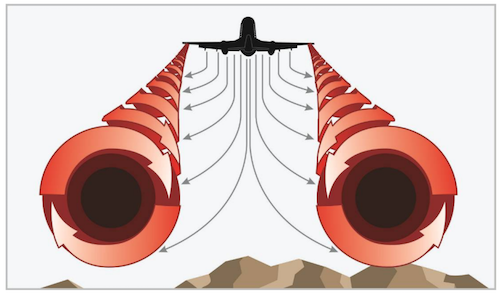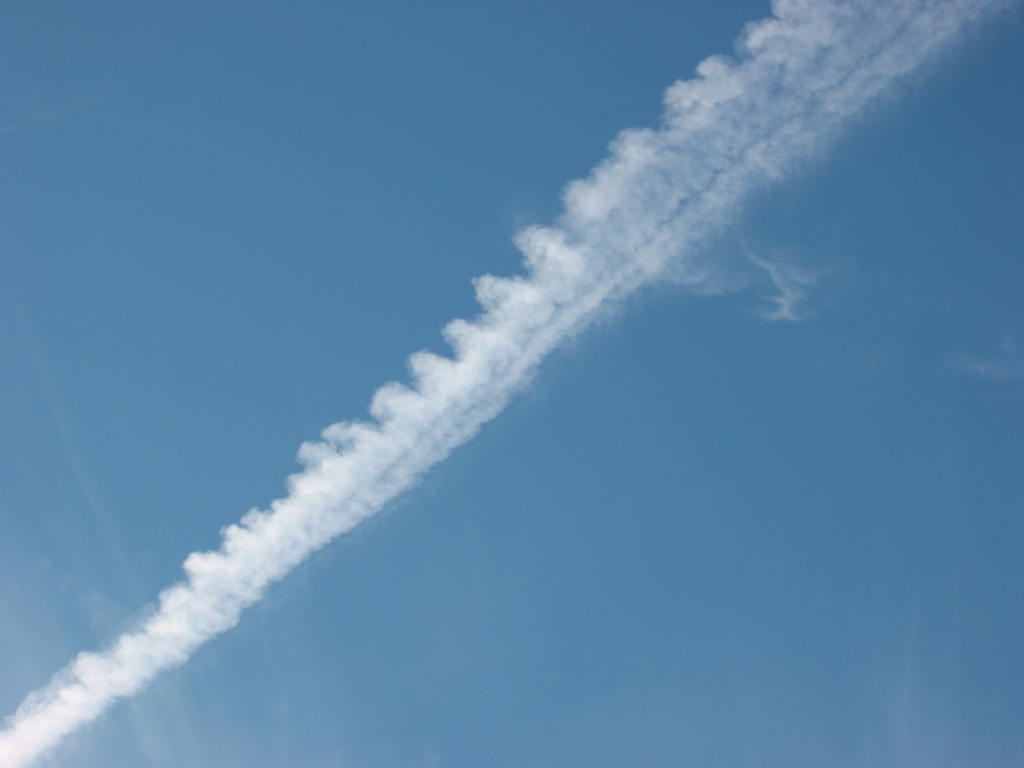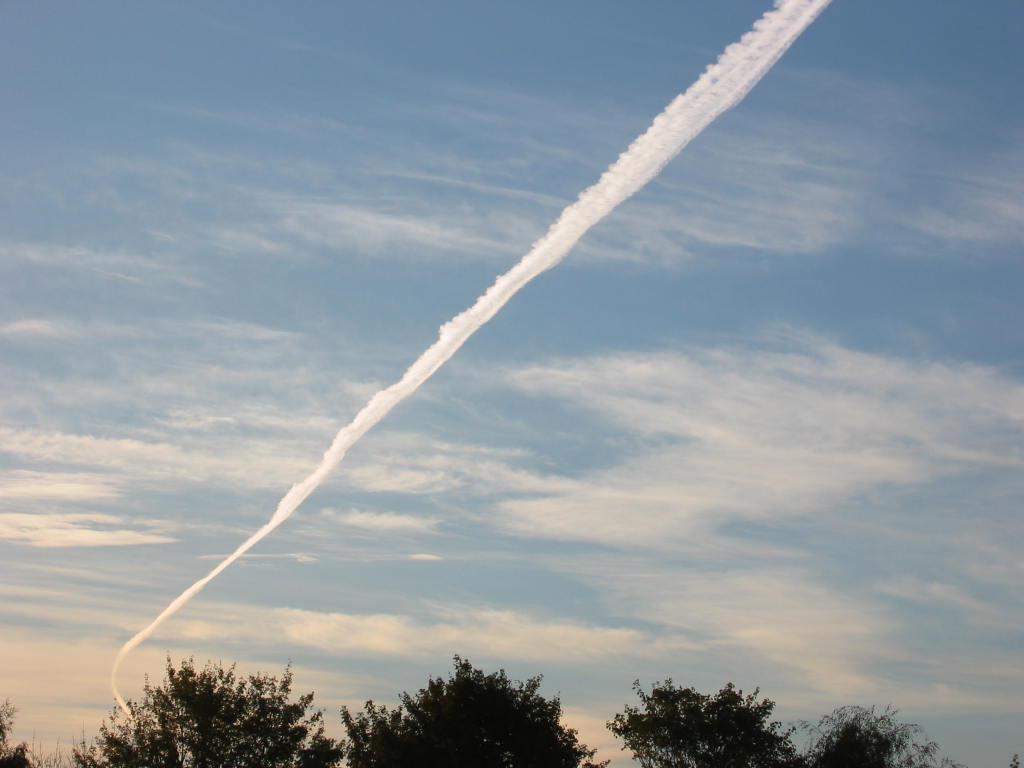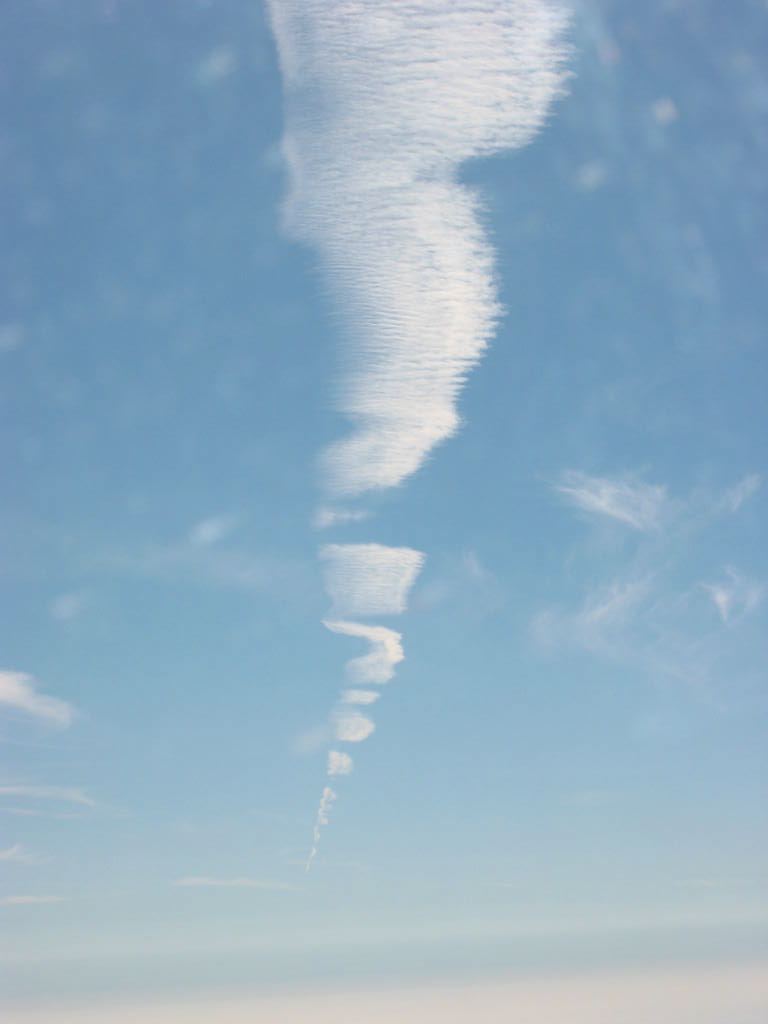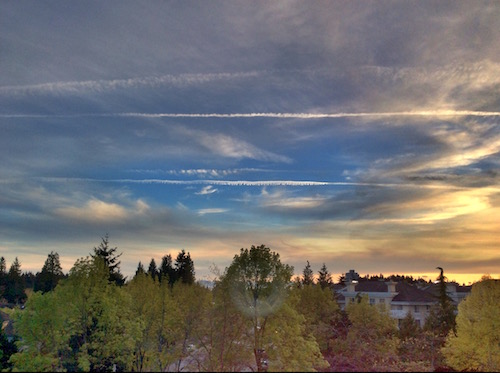ATSC 113 Weather for Sailing, Flying & Snow Sports
Special Clouds > Contrails
Learning Goal 1b. Recognize special clouds (e.g. castellanus, billow, lenticular, rotor, banner, fractus, etc.)
Contrail is a contraction for "condensation trail". It is the long narrow cloud that you see behind each jet engine of an aircraft.
Water vapor is one of the combustion products when jet fuel is burned in jet engines. When this hot water vapor (invisible) mixes with somewhat humid but non-cloudy air in the atmosphere (also invisible), the resulting mixture is a water-droplet cloud, if conditions are right.
These clouds are quickly drawn into the wingtip vortices that trail behind each wing tip as the aircraft flies (the red arrows in the diagram below). Thus, these contrails indicate regions where there is strong wake turbulence caused by the aircraft in front of you that made the clouds. Heavier, slower aircraft make more intense wake turbulence. Pilots should avoid flying into the wake turbulence of other aircraft.
Some nice YouTube videos of contrails:
... and wingtip vortices:
- https://www.youtube.com/watch?v=aYkJhmw3TIo
- https://www.youtube.com/watch?v=L_8tQKVLzE0
- https://www.youtube.com/watch?v=E1ESmvyAmOs
Key words: contrail, wake turbulence, wingtip vortices
Extra info for experts; Not Needed for this Course.
Use this expert_resources link to find all the items listed below:
- Item - Topic
- World.A.1. - World Meteorological Organization (WMO) "International Cloud Atlas" - search on "contrails"
- USA.B.2. - FAA advisory circular AC 90-23G on Wake Turbulence.
- USA.A.2. - FAA Pilot and Air Traffice Controller Guide to Wake Turbulence.
- USA.C.1. - Practical Meteorology (PrMet): Chapter 6, Clouds
Image credits. All figures by Roland Stull, except the diagram, which is from FAA AC 90-23G, page 2.
